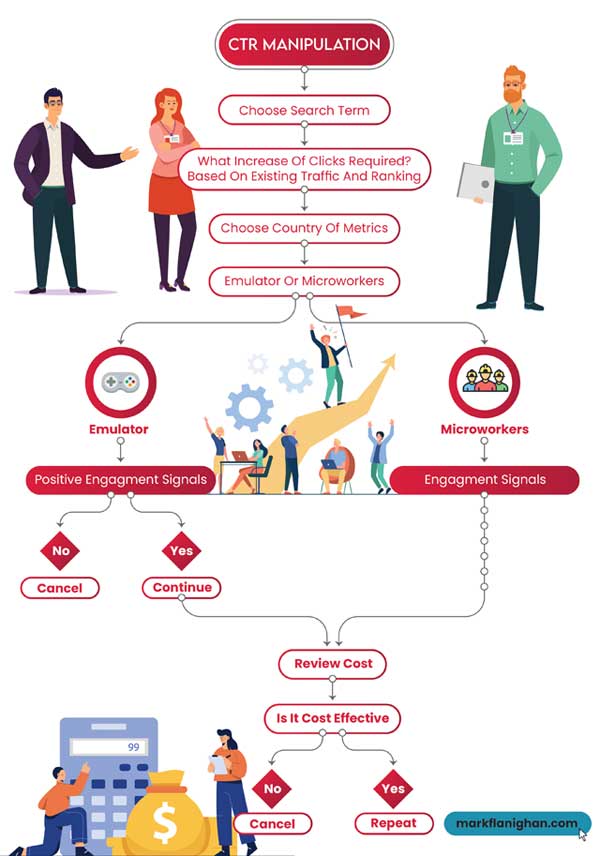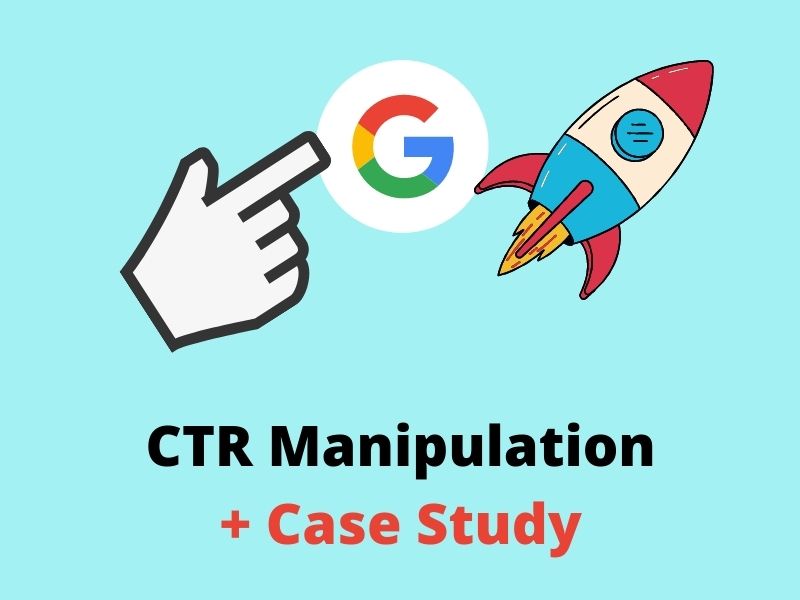Attain Greater Positions with Tested LinkDaddy CTR Manipulation Solutions
Attain Greater Positions with Tested LinkDaddy CTR Manipulation Solutions
Blog Article
The Art and Science of CTR Manipulation Explained
The manipulation of Click-Through Price (CTR) is a nuanced discipline that weds mental understandings with analytical roughness, important for driving customer interaction in a competitive electronic landscape. Marketers take advantage of numerous techniques, from compelling headlines to calculated shade selections, to capture attention and timely action. The effectiveness of these approaches hinges on an extensive understanding of user habits and moral factors to consider that can not be ignored. As we discover this intricate balance, it comes to be noticeable that the effects of CTR adjustment expand much past plain numbers, triggering a more detailed exam of its broader impact.
Recognizing Click-Through Price
Click-through rate (CTR) is a critical statistics for assessing the performance of digital marketing projects. Understanding CTR is essential for marketing professionals intending to enhance their strategies and boost individual involvement.
CTR is determined making use of the formula: (Total Clicks/ Total Perceptions) x 100. This uncomplicated calculation enables online marketers to analyze the efficiency of numerous digital properties, such as email campaigns, social media sites posts, or pay-per-click ads - CTR Manipulation. Keeping an eye on CTR aids identify trends, allowing data-driven decisions to improve content and targeting techniques
It is vital to keep in mind that while a high CTR is desirable, it must not be the single emphasis. A thorough evaluation needs to likewise take into consideration other metrics, such as conversion rate and return on investment (ROI), to assess overall campaign success. By evaluating and comprehending CTR, marketing professionals can effectively improve their digital advertising initiatives, eventually causing enhanced service results.
Mental Triggers for Engagement
To effectively drive individual interaction, marketers should use different psychological triggers that influence decision-making and habits. Recognizing these triggers can boost the performance of advertising and marketing methods and improve click-through rates (CTR)
 When individuals think a deal is uncommon or time-sensitive, they are extra likely to act quickly to avoid missing out. Highlighting endorsements, customer evaluations, or showcasing prominent products can create a sense of count on and encourage individuals to involve.
When individuals think a deal is uncommon or time-sensitive, they are extra likely to act quickly to avoid missing out. Highlighting endorsements, customer evaluations, or showcasing prominent products can create a sense of count on and encourage individuals to involve.An additional critical factor is using sob stories. Content that stimulates solid feelings, whether delight, interest, or necessity, can compel users to click. Furthermore, the principle of reciprocity, where people really feel obligated to return supports, can be efficient; offering something valuable absolutely free, such as a helpful source, can lure customers to involve better.
Strategies for Effective CTR Adjustment
Employing targeted methods for efficient CTR control entails a strategic blend of design components, messaging, and audience understanding. One basic method is using compelling headlines that evoke inquisitiveness or urgency. Headings need to be clear, concise, and lined up with the audience's rate of interests additional resources to catch attention instantly.
 Furthermore, using top quality visuals can significantly boost CTR. Pictures should be relevant and engaging, as they can create an emotional connection, motivating users to click via. Integrating contrasting shades for call-to-action buttons can additionally attract interest and boost click rates.
Furthermore, using top quality visuals can significantly boost CTR. Pictures should be relevant and engaging, as they can create an emotional connection, motivating users to click via. Integrating contrasting shades for call-to-action buttons can additionally attract interest and boost click rates.Another efficient approach is A/B testing various aspects of your material, such as duplicate variations and design designs - LinkDaddy CTR Manipulation. This iterative procedure allows marketers to determine which components resonate most with their audience
Furthermore, personalization plays a crucial function; customizing content based upon customer habits and preferences can lead to higher interaction. Crafting messages that attend to details discomfort points or needs improves importance and encourages clicks.
Finally, making certain that landing pages are enhanced for smart phones is important, as a considerable section of customers browse on mobile phones. These methods, when carried out thoughtfully, can bring about substantial improvements in CTR and general campaign effectiveness.
Analyzing Information for Better Results
Just how can information analysis transform your CTR control approaches? The application of durable information evaluation methods can considerably enhance the performance of your click-through price (CTR) control efforts.
In addition, leveraging A/B screening results provides insights into which variants of your web content yield higher CTRs. By continually view it iterating on these findings, you can improve your method, guaranteeing that each item of material is strategically crafted to record focus. Additionally, using analytical devices to monitor time invested in web pages and bounce prices can assist you understand the aspects that contribute to customer interaction.
Furthermore, segmenting your information based upon website traffic resources allows you find more information to identify which channels are most reliable in driving clicks. This insight can guide your marketing efforts towards high-performing systems. Eventually, information analysis is not just a supplementary device; it is an essential part that can drive impactful CTR approaches, inevitably causing enhanced involvement and conversion rates.
Ethical Considerations in CTR Techniques
Browsing the intricacies of CTR control requires a cautious assessment of moral factors to consider that underpin effective advertising techniques. As services aim to boost click-through prices, they must balance hostile methods with the integrity of their messaging. Misleading individuals via deceitful practices, such as clickbait or false marketing, not just deteriorates consumer count on however can likewise cause reputational damages and lawful effects.
Fairly sound CTR strategies focus on transparency and accuracy. Marketers need to make sure that the content delivered aligns with individual assumptions and offers genuine worth.
As marketing professionals analyze individual actions to optimize CTR, they should stick to regulations and respect customer rights relating to information usage. By focusing on moral standards in CTR control, businesses can cultivate a lasting marketing environment that profits both the company and its target market. CTR Manipulation Press Release.
Verdict
Finally, the art and scientific research of Click-Through Price (CTR) adjustment encompass a complex technique, integrating psychological triggers, critical techniques, and robust data analysis. While enhancing individual engagement stays a main purpose, moral considerations have to assist these strategies to make certain transparency and foster count on. Balancing efficient CTR control with adherence to personal privacy policies is crucial for sustainable involvement, eventually straightening advertising and marketing methods with user assumptions and promoting a favorable electronic setting.
The adjustment of Click-Through Price (CTR) is a nuanced technique that weds mental insights with analytical rigor, essential for driving user involvement in an affordable electronic landscape. Comprehending CTR is necessary for marketing professionals intending to enhance their techniques and enhance customer involvement. The application of durable data evaluation methods can dramatically enhance the efficiency of your click-through rate (CTR) manipulation efforts. As marketing professionals assess user behavior to enhance CTR, they have to stick to policies and regard customer rights relating to data usage. Balancing reliable CTR control with adherence to privacy policies is necessary for lasting interaction, inevitably lining up marketing techniques with individual assumptions and promoting a favorable electronic atmosphere.
Report this page